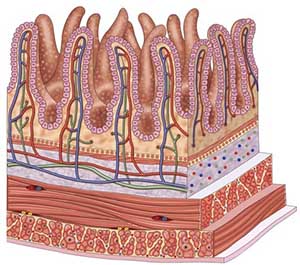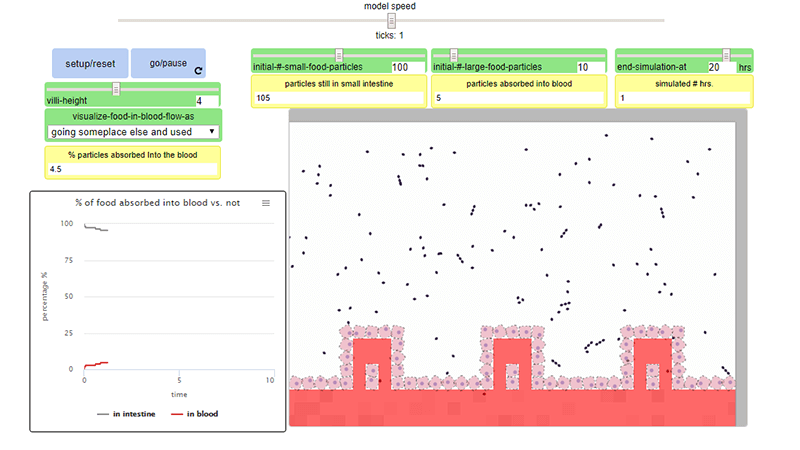Investigation: Digestive Villi and Absorption

The small intestine is the portion of the digestive tract that connects the stomach and the large intestine. The small intestine contains small finger-like projections of tissue called villi which increase the surface area of the intestine and contain specialized cells that transport substances into the bloodstream. Although these villi do not aid in the digestion of nutrients, they do help with nutrient absorption.
There are several conditions that can affect the villi of the small intestine. Celiac disease results in the immune system attacking the villi. The flattening of the villi or the loss of villi can make it more difficult to absorb nutrients. The same can occur in people with cystic fibrosis, where sticky mucus builds up and reduces absorption.
Experimental Question: How Does the Height of Villi Affect Nutrient Absorption?
Simulation: Go to https://www.openscied.org/wp-content/uploads/2019/07/Villi-Absorption.html
Simulation settings: Leave the initial small and large food particles # as they start (100, 10) and make the simulation end at 20 hours. Change the villi height to compare the total percent of particles absorbed in the blood after twenty hours. Use the setup/reset button to change the height variable.
Data Collection
Height of Villi |
1 |
2 |
3 |
4 |
5 |
6 |
7 |
8 |
9 |
10 |
% Particles absorbed |
|
|
|
|
|
|
|
|
|
|
Analysis -
1. How does changing the height of the villi affect absorption? Write a sentence that answers this question (CLAIM) and provide EVIDENCE by summarizing the trends from your data.
2. Discuss why someone with celiac disease or with cystic fibrosis might have trouble absorbing nutrient

Related Resources
Digestive System Notes Outline
Modeling the Digestive System with String

